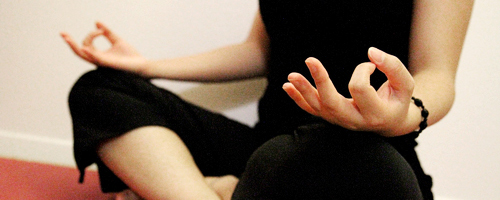All those students out there who’ve experienced grueling four-hour class sessions, listening to the professor drone on about last week’s homework assignment, you know what I’m talking about: Your eyes steal a glance at the clock and you realize your first and only break is more than 60 minutes away. Your body is overcome with anxiety, restlessness and fatigue.
To Kegel or not to Kegel?

All those students out there who’ve experienced grueling four-hour class sessions, listening to the professor drone on about last week’s homework assignment, you know what I’m talking about: Your eyes steal a glance at the clock and you realize your first and only break is more than 60 minutes away. Your body is overcome with anxiety, restlessness and fatigue.
Perhaps you didn’t get your regular dose of morning coffee, forgot to scramble your eggs or simply overslept because, even though you pledged to drink no more than one glass of wine the night before, you ended up downing the entire bottle.
I’m here to tell you, don’t fret. There is a solution, and it’s one you’ve probably not thought of: Kegels.
Kegel exercises, introduced by gynecologist Arnold Kegel in 1951, are designed for both men and women and are the perfect way to loosen up some of those tight muscles you might be feeling in class.
Kegel performed a study on more than 500 women in California who were experiencing sensitive bladder muscles, which led to involuntary urination (also known as Stress Urinary Incontinence or SUI). Basically, these women had no control over their bladders and were fed up with it.
Kegel’s study required women to insert a balloon into their vagina while contracting and
relaxing their muscles three times a day for 20 minutes. The study proved to have an 84 percent success rate; Kegels have since been proven to strengthen the pelvic muscles of both men and women.
The great thing about Kegels is that they don’t require any instruments and can be done anywhere, including in class. If time is an issue, “slow Kegels” only take 10 seconds, tops, and “quick Kegels” take just a second. Do this at least three times a day in 10-repetition sets and you’ll notice a huge difference.
The first step for women is locating the pelvic muscles, which are in the base of the pelvis near the vaginal area. Once these muscles are located, make sure to lift and squeeze through the vagina, strengthening those core muscles and breathing regularly throughout each rotation.
Kegel exercises are also a great post-childbirth routine. Like with any other exercise, you’ll gradually notice your muscles strengthening.
The same goes for guys, but you’ll want to flex your muscles every two seconds. For men who desire a secret ingredient that makes for greater sexual pleasure, these exercises can be a great boon.
Locating the correct Kegel muscles can be difficult for men, but it’s often easiest to do so while urinating: Halfway through urination, try to stop the flow of urine without tensing your muscles or holding your breath. Once you’ve successfully halted the urine flow, you’ve zeroed in on the male Kegel muscles.
Men are encouraged to contract these muscles for a slow count of five and then releasing the same muscles for a count of five, repeating this 10 times a day. Remember not to contract your abdominal, buttock or leg muscles—if you can control these muscles without doing so, you’re on the right track.
Not only do male Kegels provide deeper sexual sensations, studies have shown they strengthen male muscles to increase longevity during sex.
The following daily routines have been proven to enhance these exercises: drinking plenty of water, eating high-fiber foods, avoiding alcohol and caffeinated beverages, taking a cough suppressant when needed, and avoiding heavy lifting (if going to the gym is your thing).
To Kegel or not to Kegel? It’s not even a question.






